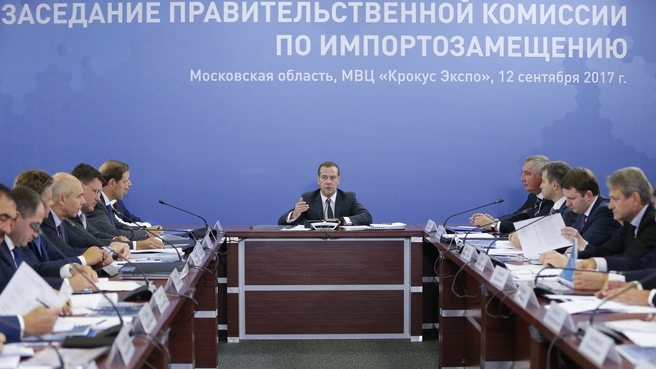Localising component production for research, testing and manufacturing equipment in photonics and microelectronics.
Excerpts from the transcript:
Dmitry Medvedev: Despite all the challenges, Russia has been quite successful overall in promoting import substitution. The pace of progress in critical areas has even exceeded our initial projections. I’m talking about the agriculture, engineering, fuel and energy complex, and radio electronics.
However, a lot has yet to be done to increase the share of Russian manufacturers in the value-added chain and to improve the competitiveness of products made in Russia.
Photonics is one promising area. We continue to pay close attention to this sector. This industry could become a key development driver for modern science and technology. Its products are widely used in research, the defence industry, micro electronics, engineering, medicine and many other areas. The market for civil photonics products is usually estimated at 60 to 70 billion roubles.
We started working on this sector in 2014 by updating all the industry-specific instruments, introducing new areas, such as quantum and optical materials, radio photonics, nano photonics and bio photonics. Permanent industry-specific councils were established within the Ministry of Industry and Trade and the Ministry of Education and Science. An intergovernmental programme was approved to designate and select priority projects that would benefit from government support. This programme is expected to be launched this year.
The programme is also part of a new programme for scientific and technical development.
We have successful projects in this area, including the Skolkovo Quantum Centre, and research in radio electronics by the Foundation for Promising Research. Initiatives to this effect are underway in Sarov and in a number of other areas.
In addition, we have the task to minimise Russia’s dependency on fibre optic imports in the short-term and eliminate this dependence completely in the future. All the prerequisites for achieving this goal are in place. What matters the most is that Russia has unique infrastructure in terms the distance it covers, which makes our country one of the largest markets for fibre optics. It is for this reason that it is essential that Russian manufacturers dominate this market.
Of course, there are other areas as well, including solar power and laser technology.
Our goal is to localise in Russian the manufacturing of components and materials used in photonics. It goes without saying that they should be competitive both in terms of quality and price, and also be relevant in the market.








